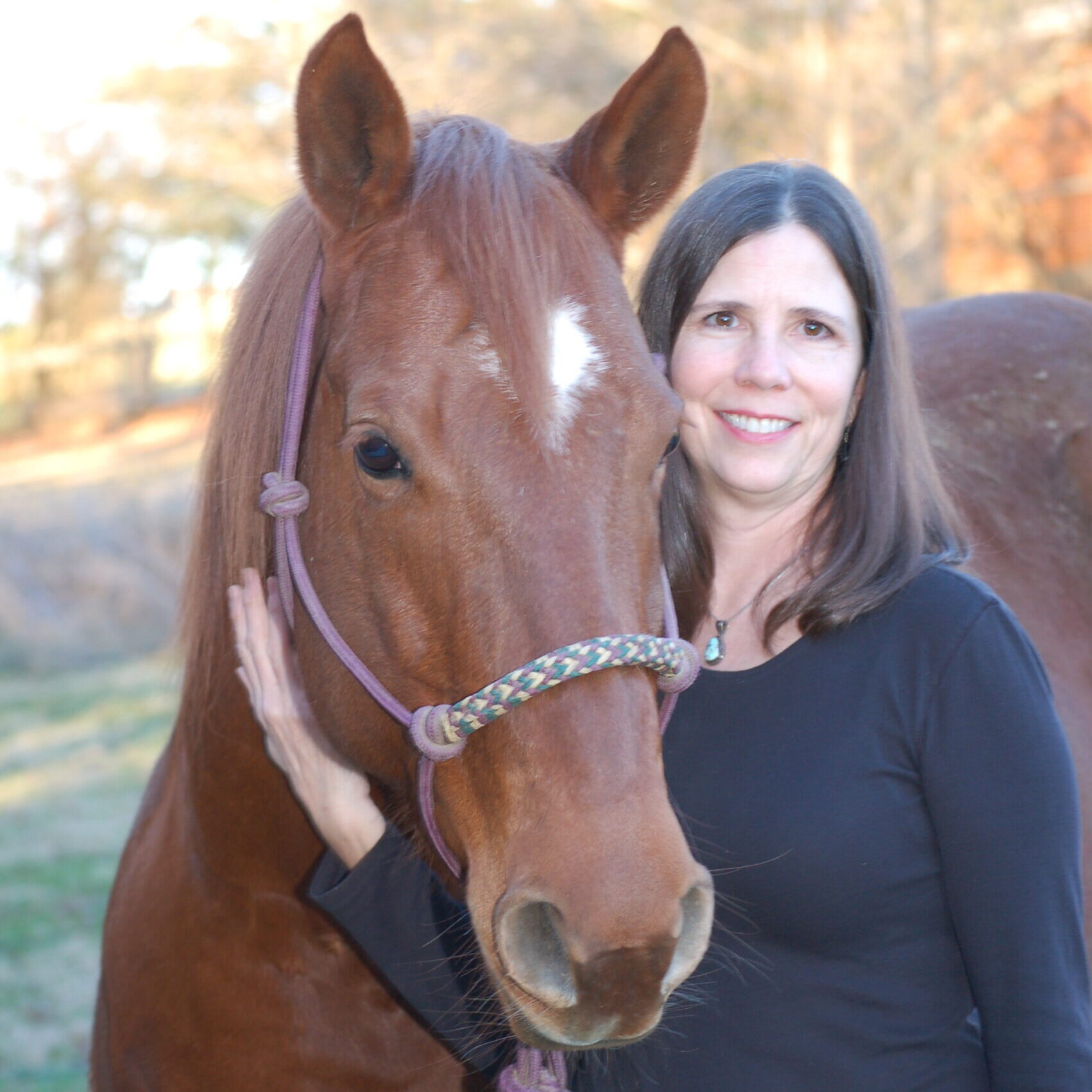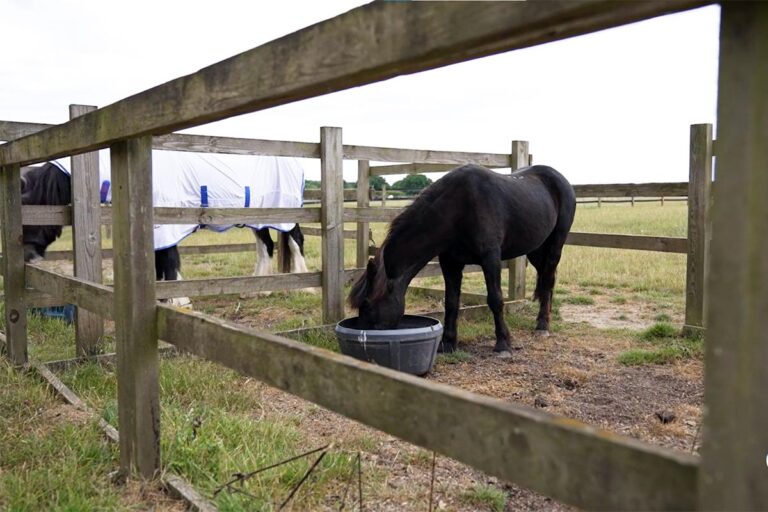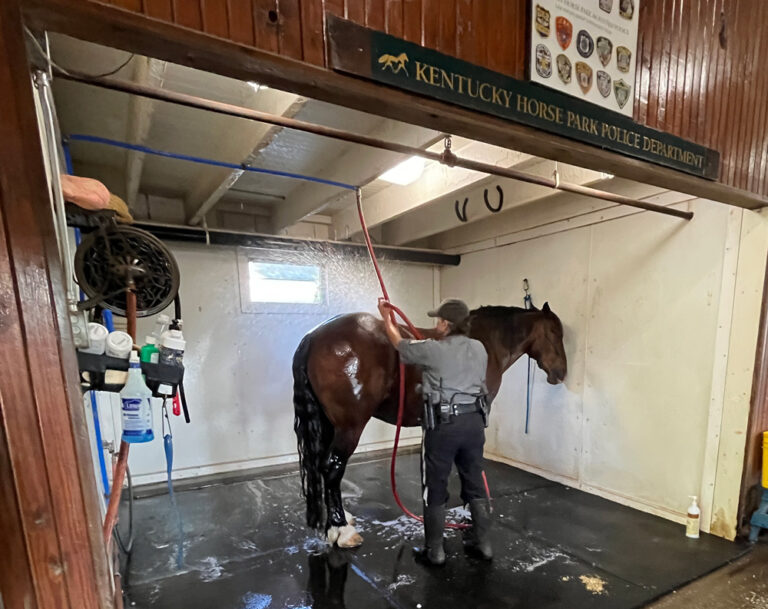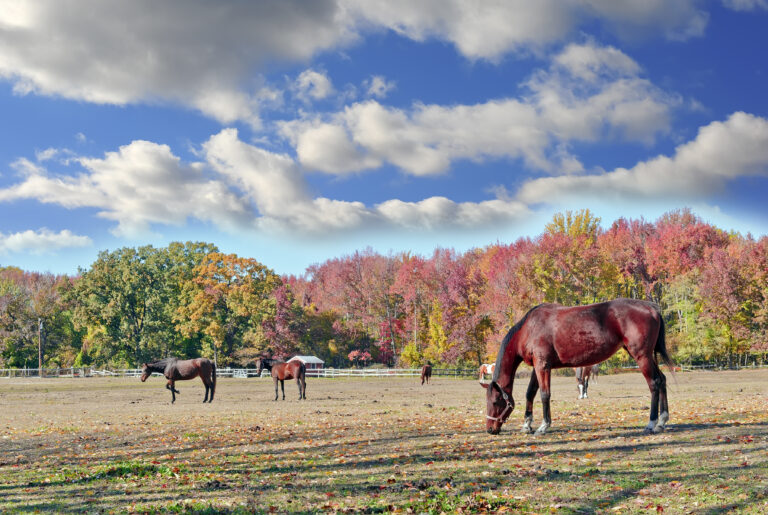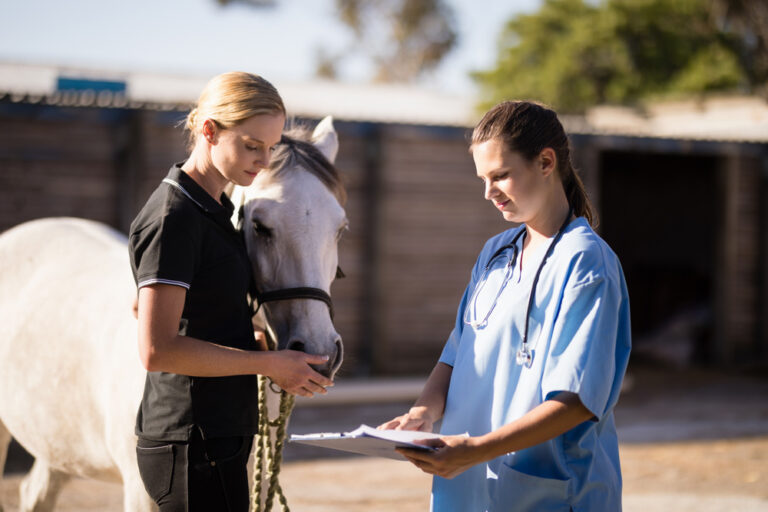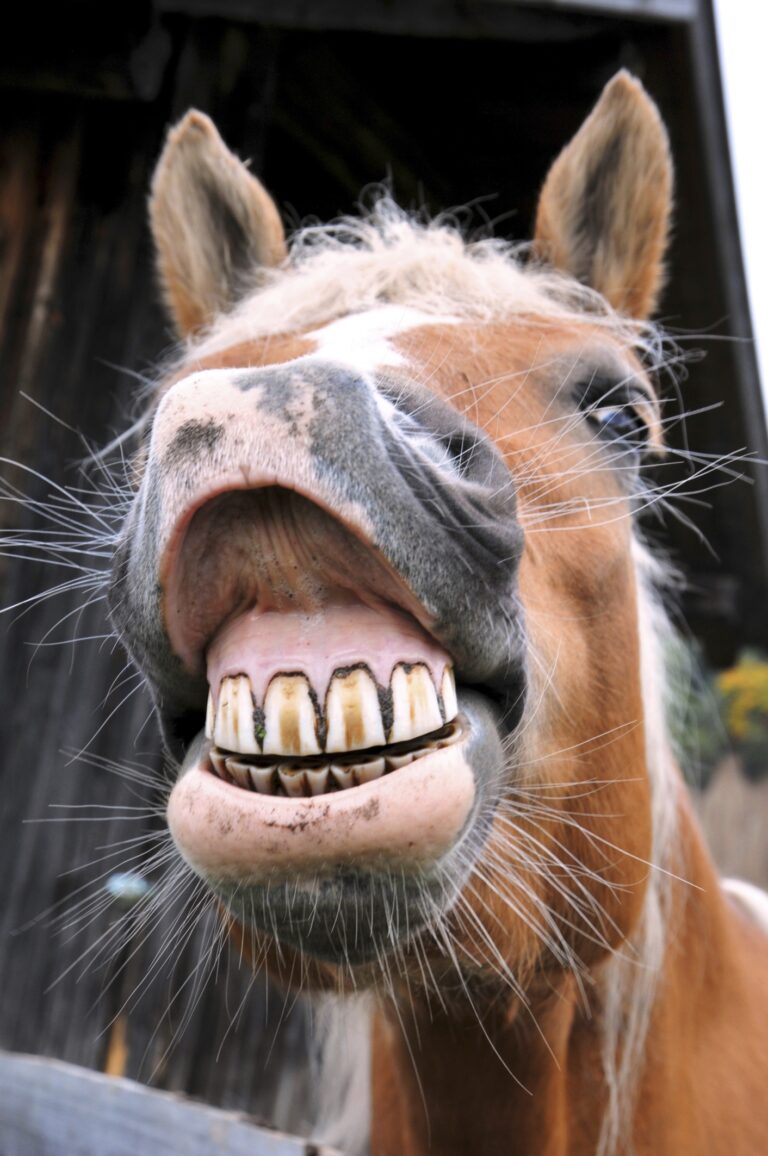Aging equines are much like aging people; it’s an individual journey. While aging is not a disease in and of itself, horses can develop some common problems as they get older (again, like humans). In this article, we’ll cover the issues often seen in aging equines and learn more about this population of equids.
Continue Basic Health Care
One of the reasons many more horses are living to ripe old ages today is they had better management and health care as young animals. Proper deworming and vaccination are key to preventing health issues as horses pass through their teen years and beyond.
The immune systems of aging horses become less viable. That means you might need to vaccinate and deworm more frequently. It is important that you work with your veterinarian to ensure your horse is getting vaccinated and dewormed properly.
Research has shown that decreases in lymphocyte (a small white blood cell) proliferation and antibody production occur in aging equines. Lymphocyte proliferation is the first step in a proper immune response in any animal. Older horses might also have diminished responses to vaccination.1
According to the Equine Disease Communication Center (EDCC), senior horses might not exhibit a robust response to vaccination because of aging’s effects on the immune system (known as immunosenescence).
Aging Equines as a Population
In 2023, Sally DeNotta, DVM, PhD, DACVIM, and Dianne McFarlane, DVM, PhD, DACVIM, wrote an article about senior horses titled “Immunosenescence and inflammaging in the aged horse.” In it they noted, “The equine population in the United States and worldwide now includes a higher percentage of geriatric horses than ever previously recorded, and as methods to treat and manage elderly equids are developed and refined, this aging population will likely continue to expand.”
They also noted that some research estimates that 22%-34% of all horses are older than 15 years of age.2,3
“In the United States, the number of senior horses over 20 years has more than doubled since 1998, and [that number] has increased by 50% in the past decade,”4 the researchers noted. “This trend is likely due to improvements in preventative health care as well as an increasing societal view of horses as companion animals as opposed to livestock. Routine vaccination, endoparasite control, and preventative dentistry have undoubtedly been the largest contributors to improved horse health and longevity in the last century. Of particular interest in geriatric equine health care are methods to support and bolster effective immunity to infections while reducing incidence of inflammatory disease.”
A 2020 study of 1,448 horses older than 20 found 68.8% were affected with a chronic health condition. The most common issues were osteoarthritis (42.4%), pituitary pars intermedia dysfunction or PPID (26.8%), dental disease (15.1%), and ophthalmic disease (11.1%).5
Osteoarthritis
Osteoarthritis is a disease typically caused by wear and tear of joints over time. It is a progressive disease, meaning it only gets worse with time. There are ways to intervene in the arthritis process, which can start in horses early in life. Osteoarthritis is also called degenerative joint disease (DJD).6
Horses with joint issues will have clinical signs that include pain (especially with joint flexion), stiffness during movement, localized swelling, and heat. Horses with osteoarthritis often have reduced athletic ability.
Arthritis can be caused by injury. However, in older horses, it usually is the result of wear and tear, as mentioned above. As joints are stressed, microdamage happens to their structures. The body responds by mounting a mild inflammatory response. That draws healing cells to the injured area.
As a horse ages and his joints sustain repeated microtraumas, the inflammatory processes can overwhelm the body’s natural inflammation controls. This can cause a breakdown in the joint’s lubricating synovial fluid. When that happens, damage can occur to the cartilage that covers and cushions the ends of the bones. This triggers more inflammation, and the cycle of inflammation continues, which can lead to chronic osteoarthritis.
A veterinarian should be involved in diagnosing any issues with a horse’s joints. Many conditions can cause pain, heat, or swelling, and a definitive diagnosis is a must to determine proper treatment.
Editor’s note: Treatments vary from exercise management to surgery. You can search for more information on treating osteoarthritis (or DJD) to learn more about treatments.
Metabolic Issues
Certain breeds of horses or individual animals are more prone to equine metabolic syndrome (EMS). According to the University of Minnesota (UMN), equids with equine metabolic disease usually have obesity or regional adiposity (fat deposits), insulin resistance (a “pre-diabetic-like state”), and laminitis.7
Horses that are known by owners to be “easy keepers” are usually “very efficient at utilizing calories and often require a lower plane of nutrition to maintain body weight than other horses, which is why EMS is a metabolic disorder,” the UMN authors noted.
The Equine Endocrinology Group put out a consensus statement in 2022 that can be found here: https://sites.tufts.edu/equineendogroup/files/2022/10/EMS-EEG-Recommendations-2022.pdf.
In that statement the group said: “Equine metabolic syndrome is a collection of risk factors highly associated with an increased risk of hyperinsulinemia-associated laminitis (HAL) and potentially other morbidities. Insulin dysregulation (ID) is a consistent feature of EMS, and increased generalized or regional adiposity is typical.
“Additional factors present in some animals include altered adipokine and postprandial incretin concentrations, hypertriglyceridemia, and hypertension,” they continued. “The syndrome may coexist with pituitary pars intermedia dysfunction in older horses. EMS results from an interaction between genetic and environmental factors, and the risk of laminitis in the individual animal therefore depends on the cumulative effects of these influences. There are high-genetic-risk animals that develop EMS with only mild environmental influences and other horses with lower genetic risk that develop EMS through exposure to improper environments (particularly diets that are high in non-structural carbohydrates [NSC]). It might therefore be assumed that any horse can develop EMS if exposed to sufficient inciting factors: improper management, exposure to environmental factors, or epigenetic influences on gene expression.”
Dental Care in Aging Equines
A horse sheds its “baby” teeth and grows in its adult teeth from 2.5 to 5 years of age. Those young horses have 2 to 3½ inches of “reserve” adult tooth below the gumline. As the horse ages, the adult teeth keep “erupting” through the horse’s gums as they wear down in the mouth. However, that process has an end. Eventually, each tooth will wear down with no more crown to erupt.
It is important that a veterinarian inspects each horse’s mouth annually to look for problems such as cracked or missing teeth, food getting packed between teeth, or teeth growing irregularly (which could cut the horse’s tongue or gums as it chews). The annual dental visit from the veterinarian usually involves hand- or machine-floating the teeth. This is simply leveling off the teeth to ensure the horse can chew properly.
As horses age, they can outlive their teeth. With proper nutrition and management, even very old horses with few or no teeth can consume enough food and remain happy and healthy.
(Author’s note: For more information about equine dental care, visit the AAEP’s PowerPoint presentation about equine dental care.)
Signs your horse has dental issues can include dropping feed, quidding (forage gets rolled up in a ball in the mouth and dropped because the horse can’t chew properly), weight loss, foul odor coming from the mouth or nose, discharge from the nose, head tossing, or unwillingness to eat/drink/chew/carry a bit.
Weight and Muscle Loss
While middle-aged horses can become overweight, some older horses will drop weight for a variety of reasons. Some horses also lose muscle as they age, often due to PPID.
Pat Harris, MA, PhD, DECVCN, VetMB, MRCVS, reported on a study titled “Muscle Atrophy Scores in a Population of Aged Horses and Ponies With and Without PPID” at the 2023 Global Equine Endocrine Symposium (GEES). She is head of the Equine Studies Group at Waltham Petcare Science Institute in the United Kingdom and Director of Science for Mars Horsecare.
Harris discussed survey results from more than 2,000 U.S. owners of senior horses. The survey had been carried out in collaboration with the Gluck Equine Research Center in Kentucky. The owners reported that nearly 20% of their older horses had low muscle mass. She explained that while age was a major contributor, PPID was an important risk factor.
Muscle Atrophy Scoring System (MASS)
At that conference, Harris discussed the new Muscle Atrophy Scoring System (MASS) the Gluck Equine Research Center in collaboration with Waltham had developed for equine use.8 To minimize confusion between adipose (fat) tissue and muscle, this scoring system requires users to first determine for each of the assessment areas whether they should use the lean MASS or the adipose MASS scoring chart, she said.
Harris also discussed a study undertaken in collaboration with Melbourne University, the Queensland University of Technology, and Boehringer Ingelheim. Overall, the PPID animals had significantly more muscle atrophy than the non-PPID animals. Most of the non-PPID animals showed no signs of muscle atrophy.
In her conclusions, Harris stated: “The results confirm that muscle atrophy is a common feature of PPID and that the scoring system developed in horses is also applicable to ponies, including Shetland/Miniature ponies. The majority of non-PPID animals (of a similar age to the PPID group) showed no evidence of muscle atrophy, indicating that old age per se is not automatically associated with muscle loss in healthy animals. As the PPID animals had similar BCS and CNS (cresty neck scores) to the non-PPID cohort, there appears to be no loss of adiposity due to this condition (assuming they are otherwise healthy). Rather, PPID appears to be associated with a specific loss of muscle tissue. These findings warrant further investigation and may have important implications for optimizing the nutrition of horses and ponies with PPID.”
Harris said the muscle atrophy scoring system could become an important monitoring tool for owners and veterinarians. She recommended concentrating just on the neck, back, and hindquarter regions for scores.
Final Words
Basic management is important for all horses but is critical in aging equines. Senior equids have specific challenges that require owners to be attentive and sometimes involve their veterinarians to determine the cause of changes and issues in their horses.
References
- Immunosenescence and inflammaging in the aged horse. Immunity & Ageing, 2023.
- Demographics, management, preventive health care and disease in aged horses. Ireland, J.L. Vet Clin North Am Equine Pract. 2016;32:195–214.
- A survey of aged horses in Queensland, Australia. Part 1: management and preventive health care. McGowan, T.W.; Pinchbeck, G.; Phillips, C.J.; Perkins, N.; Hodgson, D.; McGowan, C. Aust Vet J. 2010;88:420–7.
- Age-related trends in demographics of equids in United States. In: USDA National Animal Health Monitoring System (NAHMS) Studies. 2015.
- Aging equines: understanding the experience of caring for a geriatric horse with a chronic condition. Ballou, M.E.; Mueller, M.K.; Dowling-Guyer, S. J Equine Vet Sci. 2020;90: 102993.
- Managing DJD in Horses: Vet Panel Provides Insights to Help Your Practice. EquiManagement.com. 2021.
- Equine Metabolic Disease. University of Minnesota.
- Development and Evaluation of a Muscle Atrophy Scoring System (MASS) for Horses; Alisa C. Herbst; Mackenzie G. Johnson; Hayley Gammons; Stephanie E. Reedy; Kristine L. Urschel;,Patricia A. Harris; Amanda A. Adams. Journal of Equine Veterinary Science. 2022.
Further Reading
- When is a Horse Considered Senior? Clare Barfoot, RNutr. MySeniorHorse.com
- How Long Can A Horse, Donkey, or Mule Live? Kimberly S. Brown. MySeniorHorse.com
- Planning Retirement for an Older Horse. Merry Smith, MA, VetMB, PhD, DipECVS, AECVDI, MRCVS. MySeniorHorse.com
Sign up for My Senior Horse’s FREE newsletter to get the latest information about equids 15 years and older delivered straight to your inbox!
-
View all posts
Kimberly S. Brown is an award-winning writer and publisher. She is the Editorial Director for My Senior Horse. Brown spent 10 years at Equine Network, parent company of My Senior Horse. Prior to that she worked for three years in equine nutrition after she retired from nearly 30 years working at The Blood-Horse. Brown spent the last 15 years of her time at that organization creating and developing The Horse and TheHorse.com.


